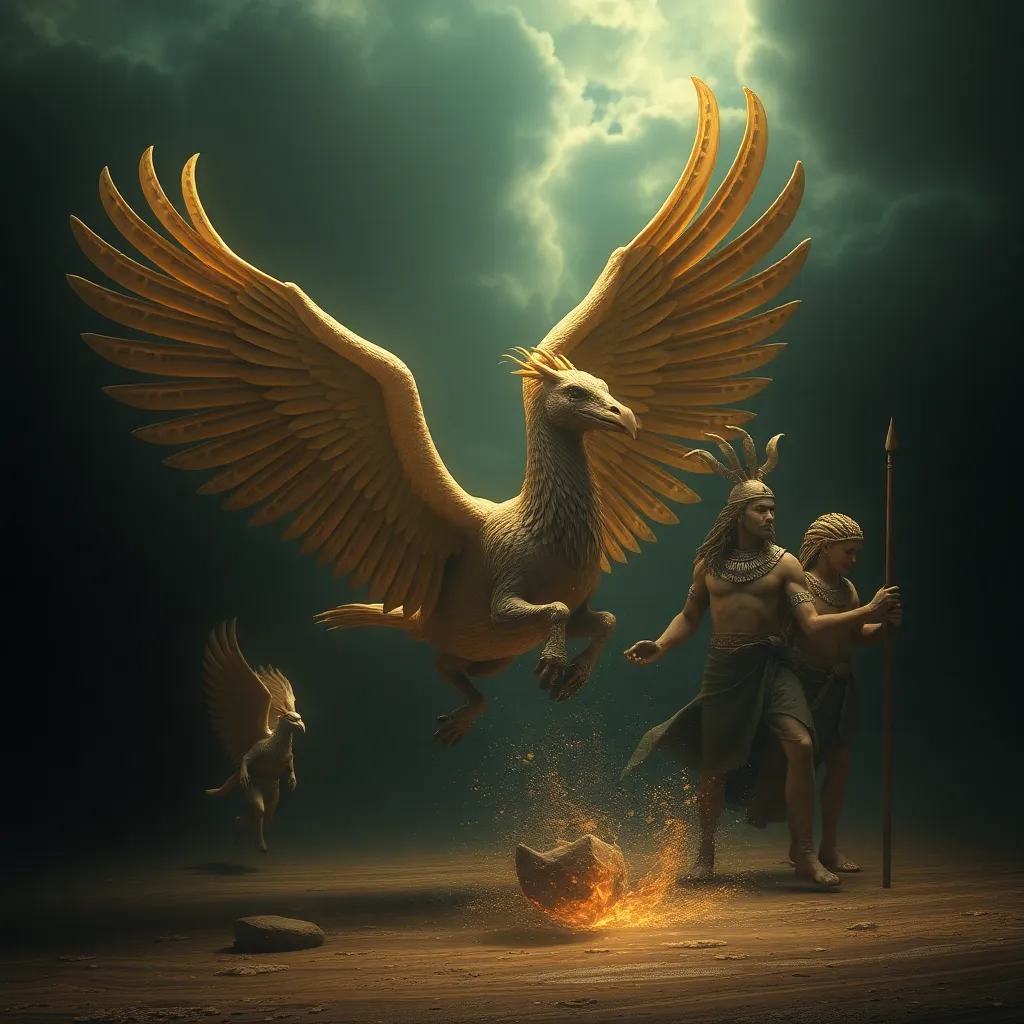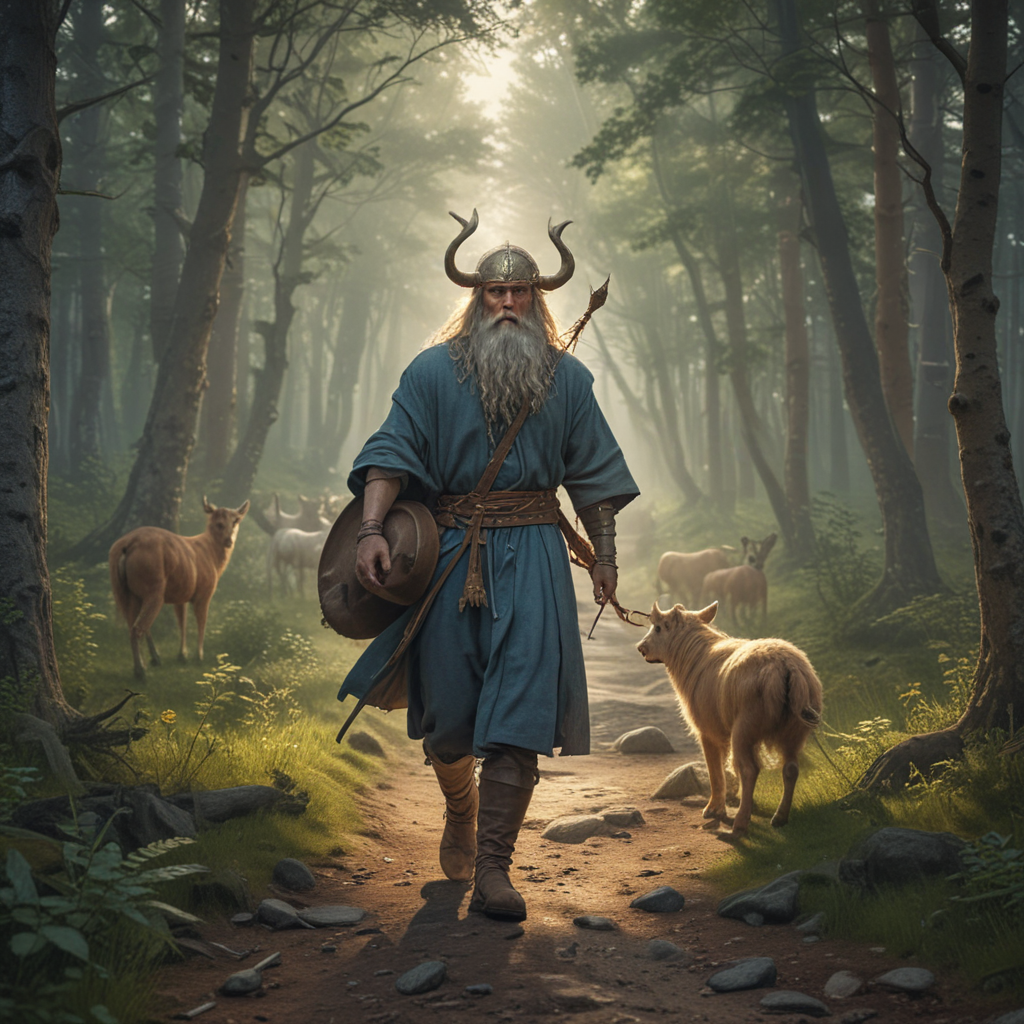The Hippogriff and the Gods of the Nile: A Mythological Exploration
I. Introduction
Mythological creatures have played a significant role in the tapestry of human culture, serving as symbols, archetypes, and reflections of societal values and beliefs. Among these creatures is the Hippogriff, a legendary beast that has captured the imagination of many. In contrast, the Gods of the Nile represent the rich and complex mythology of ancient Egypt, intricately tied to the lifeblood of its civilization—the Nile River. This article aims to explore the connections and contrasts between the Hippogriff and the Gods of the Nile, shedding light on their relevance and significance in the broader context of mythology.
II. The Hippogriff: Origins and Characteristics
A. Historical background of the Hippogriff in literature
The Hippogriff first emerged in the early 16th century through the writings of the Italian poet Ludovico Ariosto in his epic poem “Orlando Furioso.” This creature is a hybrid, depicted as having the front half of an eagle and the hindquarters of a horse. The Hippogriff symbolizes the union of contrasting elements, embodying both nobility and freedom.
B. Physical description and symbolic meanings
Visually, the Hippogriff is a majestic creature, often portrayed with large, powerful wings, a sleek horse-like body, and an eagle’s head. Its dual nature makes it a powerful symbol of not just freedom and nobility, but also the potential for transformation and transcendence. The Hippogriff represents the ideal of overcoming boundaries, both physical and metaphorical.
C. Role in popular culture and modern interpretations
In contemporary culture, the Hippogriff has appeared in various forms of media, including literature, film, and video games. Notably, J.K. Rowling’s “Harry Potter” series features a Hippogriff named Buckbeak, who is portrayed as a noble and intelligent creature. This modern interpretation has helped to revive interest in the Hippogriff and has solidified its place in popular imagination.
III. The Gods of the Nile: An Overview
A. Introduction to ancient Egyptian mythology
Ancient Egyptian mythology is a complex system of beliefs that revolves around deities, creation myths, and the afterlife. The Nile River, considered a divine entity, was central to the Egyptians’ understanding of life, death, and rebirth. The gods associated with the Nile played crucial roles in agriculture, fertility, and the afterlife.
B. Key deities associated with the Nile River
- Hapi: The god of the Nile’s inundation, Hapi was revered for bringing fertility to the land through the annual flooding of the Nile, which deposited nutrient-rich silt on the banks.
- Osiris: Often associated with the Nile, Osiris was the god of the afterlife and fertility. His death and resurrection were linked to the cyclical flooding of the Nile, symbolizing renewal and rebirth.
- Sobek: The crocodile deity Sobek was worshiped as a protector of the Nile and its waters. He represented the duality of nature, embodying both the nurturing and destructive aspects of the river.
IV. Symbolism and Significance of the Hippogriff
A. The Hippogriff as a symbol of nobility and freedom
The Hippogriff is often seen as a symbol of nobility and freedom, embodying the spirit of adventure and the quest for the unattainable. Its ability to soar through the skies represents the human desire for liberation and transcendence.
B. Interaction between man and beast in myth
In various myths, the interaction between humans and mythical beasts often reflects deeper themes of power, respect, and understanding. The Hippogriff’s noble nature suggests a harmonious relationship between man and beast, where mutual respect leads to extraordinary journeys.
C. Comparison to other mythological creatures in different cultures
Similar to the Hippogriff, many cultures have mythological creatures that embody duality and transformation. For instance, the Griffin, which combines the features of a lion and an eagle, represents strength and wisdom in various mythologies. These creatures often serve as guardians or symbols of higher ideals.
V. The Nile: A Lifeline in Egyptian Mythology
A. The Nile’s role in sustaining ancient Egyptian civilization
The Nile was not just a river; it was the lifeblood of ancient Egypt. Its annual flooding provided fertile soil for agriculture, which was essential for sustaining the population. The Egyptians revered the Nile as a divine entity, essential for their survival and prosperity.
B. Myths and legends surrounding the Nile’s flooding and fertility
The flooding of the Nile was seen as a miraculous event, linked to the blessings of the gods. Many myths describe the river’s inundation as a divine gift, symbolizing rebirth and renewal. The cycle of flooding and retreating waters represented the cyclical nature of life.
C. The relationship between the gods and the Nile’s ecosystem
The gods of the Nile were believed to directly influence its waters and the fertility it brought. The Egyptians created rituals and offerings to appease these deities, ensuring the continuation of the river’s blessings. This relationship highlights the deep connection between the divine and the natural world.
VI. Connections Between the Hippogriff and the Gods of the Nile
A. Shared themes of duality and transformation
Both the Hippogriff and the Gods of the Nile embody themes of duality and transformation. The Hippogriff’s hybrid nature reflects the merging of different realms, while the gods represent the balance between chaos and order in the natural world.
B. The interplay of human and divine aspects in both mythologies
In both mythologies, there is a strong interplay between human experiences and divine influences. The Hippogriff serves as a bridge between the mortal and the magical, while the Gods of the Nile govern the fundamental aspects of life and death in ancient Egyptian culture.
C. Influence of cross-cultural exchanges on mythological narratives
Throughout history, cross-cultural exchanges have enriched mythological narratives, leading to the incorporation of elements from one culture into another. The fascination with mythological creatures like the Hippogriff can be seen as a reflection of shared human experiences across different societies, including the reverence for nature and the divine.
VII. Thematic Reflections: Power, Freedom, and Nature
A. Exploration of power dynamics in both mythologies
Both the Hippogriff and the Gods of the Nile illustrate complex power dynamics. The Hippogriff represents the power of freedom and the spirit of adventure, while the gods embody the authority and control over natural forces, highlighting the delicate balance between humanity and nature.
B. The importance of nature as a source of life and inspiration
Nature plays a crucial role in both mythologies. For the Egyptians, the Nile was the source of life, while the Hippogriff symbolizes the awe-inspiring beauty and mystery of the natural world. Both narratives remind us of the importance of respecting and understanding our environment.
C. Lessons learned from myth: the relationship between humanity and the divine
Myths often serve as moral lessons, teaching us about the relationship between humanity and the divine. They encourage respect for natural forces, the pursuit of freedom, and the understanding of our place within the cosmos. These themes remain relevant today, urging us to seek harmony with the world around us.
VIII. Conclusion
In summary, the exploration of the Hippogriff and the Gods of the Nile reveals rich narratives that highlight the complexities of human experience and the natural world. Both mythological elements serve as reflections of cultural values, emphasizing themes of freedom, power, and the divine. As we delve into these myths, we uncover enduring legacies that continue to resonate in contemporary society, reminding us of the timeless quest for understanding and connection with the world we inhabit.




